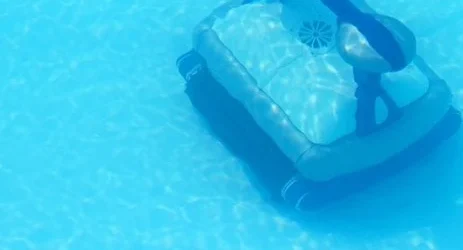
Owning a pool is an incredible luxury, but let’s be honest — it’s not always smooth sailing. At some point, every pool owner faces a few headaches. The good news? Most common pool problems are totally fixable with a little patience, the right tools, and some know-how.
If you’ve ever walked outside to find your pool water looking a little “off,” don’t worry. You’re definitely not alone.
Cloudy or Murky Water
There’s something deeply unsettling about cloudy pool water. It looks uninviting and can be a sign that your pool isn’t as clean as it should be. Cloudy water often comes from imbalanced chemicals, poor filtration, or environmental factors like heavy rain.
How to fix it:
- Test your water chemistry and adjust chlorine and pH levels.
- Clean or backwash your filter.
- Run the pump longer to improve circulation.
- Use a pool clarifier if needed to bind particles together for easier filtration.
A little patience and good filtration usually bring the sparkle back.
Algae Growth
That greenish tint creeping across your pool surface? That’s algae taking hold. Algae love warm, stagnant water and can spread quickly if left untreated.
How to fix it:
- Shock the pool with a heavy dose of chlorine.
- Brush the walls and floor aggressively.
- Keep the pump running continuously until the water clears.
- Follow up with an algaecide for extra protection.
Prevention is easier than treatment, so regular maintenance and circulation are key.
Low Water Levels
It might seem obvious, but low water levels can cause serious equipment damage. If your skimmer runs dry, it can burn out your pump motor quickly.
How to fix it:
- Refill the pool to the midpoint of the skimmer.
- Inspect for leaks around fittings, lights, or plumbing.
- If you suspect a leak but can’t find it, a simple bucket test can help diagnose.
A small leak can turn into a big problem fast, so don’t ignore it.
Strong Chlorine Smell
Surprisingly, a strong chlorine smell isn’t caused by too much chlorine — it’s often a sign of not enough. What you’re smelling is chloramines, a byproduct of chlorine mixing with contaminants.
How to fix it:
- Shock the pool to break up chloramines.
- Improve ventilation if it’s an indoor pool.
- Keep chemical levels properly balanced moving forward.
A fresh, clean pool shouldn’t have any harsh chemical odor at all.
Scaling or Staining
White, crusty buildup along the waterline? Rust-colored stains on the walls? Scaling and staining happen due to high calcium levels or metals in the water.
How to fix it:
- Use a pool scale remover product for calcium buildup.
- Apply a metal sequestrant if metals are present.
- Adjust water hardness and pH to proper levels.
Early treatment keeps your pool looking pristine and protects your surfaces.
Heater Issues
Jumping into a cold pool when you expected warm water is never fun. Heater problems often come down to clogged filters, broken thermostats, or mechanical failures.
How to fix it:
- Ensure the filter and pump are clean and unobstructed.
- Check thermostat settings.
- Schedule a professional inspection if the issue persists.
Maintenance and early troubleshooting often prevent expensive heater repairs.
Final Thoughts
Pool problems happen to everyone, even seasoned owners. The secret is not to panic — most issues have straightforward solutions. Regular maintenance, early intervention, and a little knowledge go a long way toward keeping your pool clear, safe, and swim-ready.
And hey, once you fix the problem, that first perfect dive back into crystal-clear water is even more rewarding.
Need help diagnosing a tricky pool issue? Sometimes calling a pro is the smartest shortcut to getting back to paradise.
